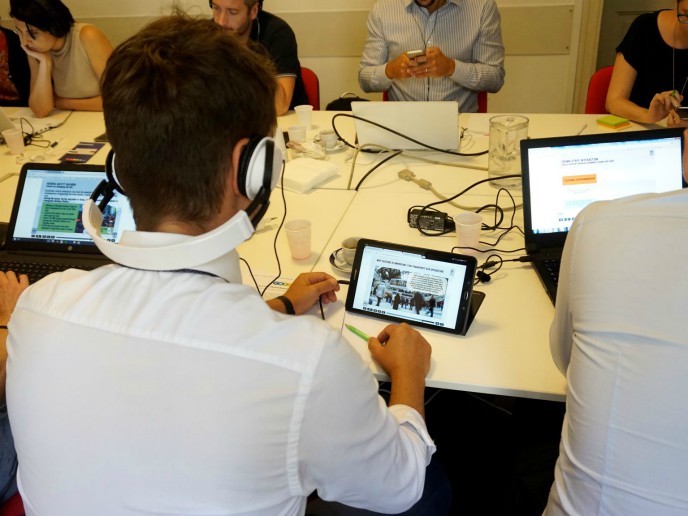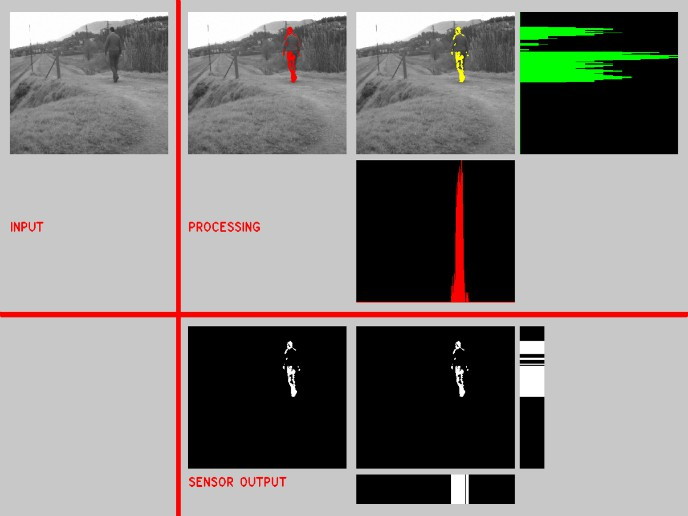Factoring cultural differences into crowd safety and security at transport hubs
A multi-cultural approach to transport hub management adapts the physical environment, while providing appropriate communications (including signs and signals) to cater for different cultural needs and expectations. Yet there remains a pronounced lack of standardised and culturally aware risk assessments, inter-culturally competent staff, communication strategies and training, with implications for emergency preparedness and response. The EU-funded IMPACT project was set up to develop methodologies and solutions for cross-cultural emergency prevention and management. Analysing the influence of socio-cultural factors on safety and security management related to public transport systems allowed the team to create the IMPACT Theoretical Framework. This in turn served as a basis for the IMPACT Supporting Measures, which included the use of agent-based models to develop cultural risk assessments, culturally-based emergency communication guidelines and culturally-aware training, with best practices and policy recommendations. Integrated culturally-aware safety and security precautions Transport hubs such as airports, railway stations and ports see thousands of travellers from around the world passing through them. This means that transport operators are required to have more multi-cultural competence skills in dealing with both passengers and colleagues than ever before. As the IMPACT project coordinator Dr Alessandra Tedeschi puts it, “I have experienced how much public transport hubs are becoming more crowded multi-cultural environments. In such environments, miscommunication, misunderstandings and hazardous behaviours may arise due to cultural differences.” The IMPACT team began by developing a cultural risk assessment which integrated international standards (such as ISO 31000) which could be modified to cater for potentially hazardous cultural behaviours. The methodology traced the escalation of consequences due to specific cultural characteristics and included possible mitigation actions. Then the project analysed transport hubs, mapping their characteristics from the psycho-social point of view and consequently documented how these might impact on behaviours. The next step was to use past events to analyse culture-specific hazardous behaviours, identifying the main behaviours that could either amplify or diminish safety hazards or security threats, or even result in new hazards. Finally, the work identified and evaluated existing standards or best practices for emergency management, including mitigation measures such as first-aid, long-term health care, communication, training and signage, relevant for specific cultural groups and ethnic minorities. This work formed the basis for the development of four computer-based interactive training lessons on cultural behaviour risk assessment, using agent-based computational modelling. The behavioural modelling and simulations of cross-cultural crowd behaviour in transport hubs, considered two principal scenarios: passenger evacuation, looking at specific characteristics that could slow down the process, and stranded passengers to investigate group frustration, with issues such as disputes for resources and priorities in queues. Explaining the impact of socio-cultural factors on these scenarios, Dr Tedeschi points out, “Cultural aspects like language, understanding of signage and traditional clothing affect dynamics. For example, cultural groups with traditionally long clothes may be slowed down during an evacuation, increasing the risk of injury. On the other hand, a multi-cultural crowd not understanding the announcements immediately can enable a phased evacuation, avoiding immediate exit congestion. Socio-cultural factors have been found to affect evacuation time by up to 30 %.” The project was able to develop guidelines to tailor emergency messages to particular communities, incorporating techniques such as using inclusive language, alongside the need for sensitivity around different cultural interpretations of non-verbal communication such as eye contact, gestures, facial expressions and personal space. Extending and customising IMPACT results There is clearly a gap across the aviation, rail and maritime sectors, for the adoption of the IMPACT risk assessment and management, communication in emergency and training methodology, in support of a range of standards and guidelines. Additionally, the tools are also applicable to other scenarios characterised by multi-cultural crowds, such as music festivals, shopping malls and even refugee camps. The team are currently working to further maximise the project results. This includes the customisation of multi-cultural guidelines for the worldwide railway organisation (UIC), developing a customised training package for the International Air Transport Association (IATA) and a new project with two IMPACT partners to augment the evacuation model and emergency communication package. Additionally the EU-funded LETS-CROWD project may apply IMPACT models, while LEGION is also interested in IMPACT’s models.
Keywords
IMPACT, Transport hub, safety, security, disaster preparedness, emergency response, risk assessment, culture, intercultural, cross-cultural, crowds, hazardous behaviours, mitigation







